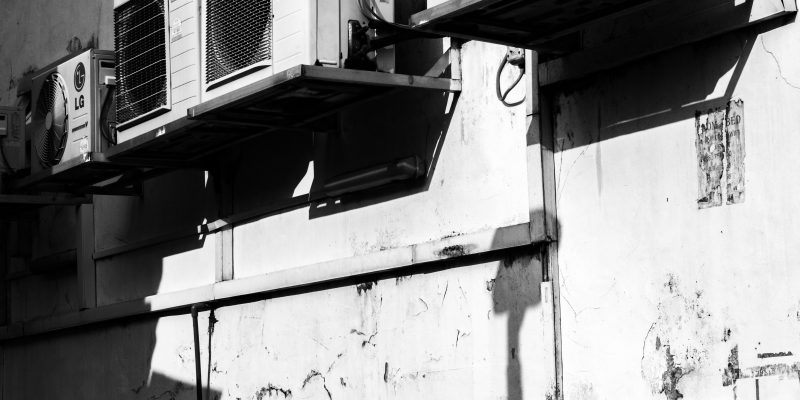How do you know when there is mold in your air ducts? A musty odor is a sign of a mold problem in your vents. Sometimes the mold is visible on the condenser coils. Finding out what causes mold build-up in air conditioners is the first step to creating a plan to eliminate it.
Mold build-up in your air ducts is hazardous to your health and worse if you have a respiratory medical condition. With that knowledge, it is essential to involve an expert in mold build-up. You can find one here to walk you through what to expect with mold build-up in the air ducts.
This article will show you what causes mold and other elements of mold.
Causes of mold growth in air ducts
Generally, mold tends to grow in ductwork with moisture and warm temperatures. That’s because the warm, humid surrounding is conducive to mold growth.
So, here are the causes of mold growth in the air ducts.
Setting AC temperature too low
Mold build-up in the ductwork will develop if you are fond of setting the AC temperature too low. It happens when the cool air from the system meets warm air in your living space, for instance.
The effect comes from the temperature difference since it’s caused by condensation in the vents. The temperature differential in this context is absolutely 20 degrees. Condensation inside the vents and on the ducts may fail to dry out, so mold sprouts from it.
Oversized HVAC unit
You have to get an appropriately sized HVAC system for your space. Otherwise, mold build-up in the ductwork is one of the problems you will experience. An oversized HVAC overperforms and ends up cooling the smaller room it’s installed in too quickly. It does so before the set time to switch off while the air in circulation still has high humidity.
Humidity is one of the elements that mold needs to thrive. It accumulates in the vents after condensation with access to a bit of heat, and mold starts to grow there. Mold grows in the ductwork as soon as you install a new unit if it’s too big for your space.
Leaks in the air ducts
Regular maintenance on the ductwork is necessary to note the torn parts that may contribute to leaks. Besides, leaks in the air ducts let in warm air, which also causes temperature differences. These problems are similar to what happens after setting the AC temperature low too often.
Moisture condenses on the vent walls due to temperature differences. Once the condensation pools, it creates the perfect environment for mold growth. Sealing the leaks and preventing them can help keep the mold away.
Poor ventilation and plumbing leaks also contribute to mold growth in the ductwork. Ventilated areas like bathrooms adequately ensure you reduce moisture content in your home. Know what to look for as signs of mold build-up in your ductwork.
Signs of mold build-up in the air ducts
Sometimes it takes scientific measures of lab testing and using a mold testing kit to detect mold in your home’s ductwork. Still, there are a few indicators to look out for to know when there is mold in the air ducts. Some signs include:
Allergy symptoms
Breathing in mold spores results in headaches, itchy eyes, sneezing, nasal congestion, and skin irritation. These symptoms are likely to appear when you turn on your unit. They also fade once you switch off the unit. However, the symptoms are likely to get worse the longer you wait, so examine your unit as soon as you notice this.
Mutsy smell
A musty odor is the most common indicator of mold invasion. With this, you must rely on your sense of smell since the mold is not visible at first. The smell is mildew-like and musty and comes out when you turn on the HVAC unit.
Visible mold growth
Typically, mold is invisible since ist microscopic spores. It indicates that it has gotten out of hand by the time you start noticing its growth through the naked eye. It’s best to take immediate action once you see this.
Black dust around the HVAC
The dust you notice around the HVAC unit when the mold in the air duct is toxic. Wiping it is also quite challenging to have a professional handle it as soon as possible since it quickly spreads from one point to another.
How to DIY mold build-up removal in air duct
The EPA advises against running your HVAC if you suspect that it has mold growing. Running it pollutes your home. However, suppose you opt for DIY mold removal from the ductwork. It’s best to go about it the right way. The best thing to do is ensure you wear protective equipment.
You’ll need a mask with filters, gloves, and goggles to protect all the sensitive parts. Operate the HVAC only after ensuring you have cut off the power supply at the main switch. Use household cleaners like detergent and dishwashing liquid. Baking soda might come in handy as well.s
Why you should allow a professional to remove mold build-up in air ducts
Hiring an expert to take care of the mold problem in your air ducts might seem like an unnecessary expense at first. However, experts know what you do when evacuating mold and how to keep it from growing back quickly. A professional has the right equipment and chemicals to clean the mold. Household cleaning products are not effective on mold spores.
A trained expert knows to treat the system with care, as some parts of the unit are delicate. Also, your technician knows the right way to dispose of mold after cleaning the ducts so that it won’t contaminate another area.
Final Words
Various types of mold could grow in air ducts. So, inspect the vents from time to time, especially during fall, to detect mold build-up early. But please don’t ignore it, as it is a serious indoor air pollutant with many risks. When dealing with mold, consider hiring an expert to eliminate it.
Mold build-up is a nuisance you can easily avoid through regular duct cleaning. It’s best to schedule duct cleaning even when you don’t think the air ducts have mold. Maintaining the air ducts ensures good health in a humid climate like Miami.




















